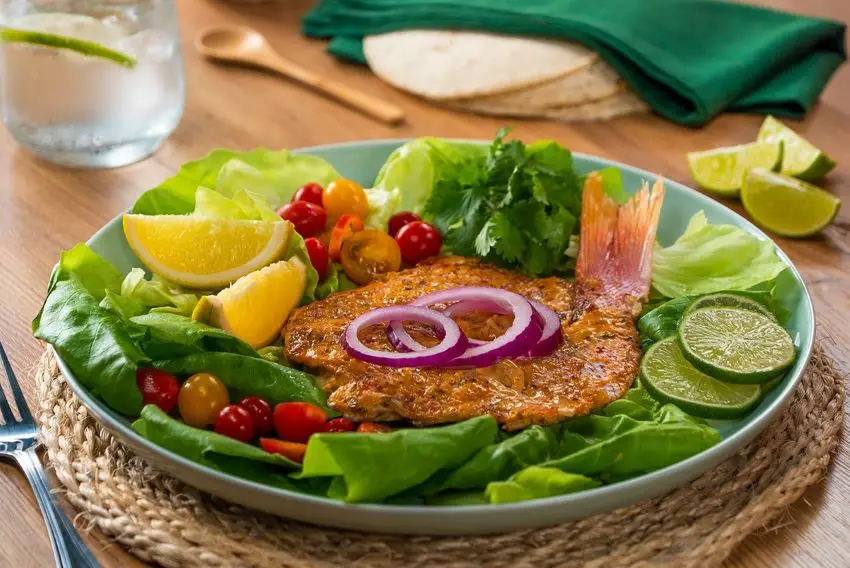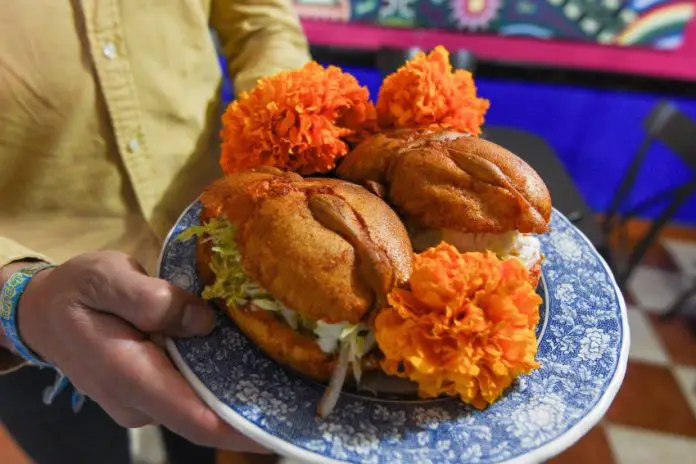Mexico is home to one of the great global cuisines, and while the international image may not extend past burritos and beans, the country’s food is regionally-specific and steeped in history and flavor. Of course, Mexican food slang is every bit as diverse too.
The author of “The Mexican Slang Dictionary,” Alasdair Baverstock, has a few suggestions for the lesser-known dishes.
Aguachile – noun. Raw seafood dish, similar to ceviche, in which the curing lime sauce is flavoured with chili and other spices.
Alambre – noun. A dish in a taquería in which the taco filling and the tortillas are served separately, allowing the diner to taquear of their own accord.
Aporreado – noun. A dish typical of the Tierra Caliente, in which dried beefsteak, egg, beans, tomatoes and spices are stewed together. Also known as aporreadillo.
Barbacoa – noun. Slow-cooked meat dish, usually goat or mutton. The root of the English word ‘barbeque,’ Mexico’s best barbacoa is found in the Bajío — connoisseurs say specifically in the state of Hidalgo.
Traditionally prepared in deep ovens — often excavated into the earth itself — a fire is set at the bottom of the pit, followed by the stacked meat, wrapped in agave pencas. The whole is buried and left to cook over the course of many hours. As a result, barbacoa is a dish most-commonly eaten for breakfast or lunch. Cuts from the animal vary, but include costilla (rib), espaldilla (shoulder) and espinazo (spine), often served with pancita — offal prepared in the stomach — and consomé, the juices from the meat collected at the bottom of the oven and mixed with chickpeas.
Burrito – noun. A Norteño staple consisting of a flour tortilla wrapped around a filling. It is worth noting that while the burrito is a dish commonly associated with Mexican cuisine, the Tex-Mex version found in el Gabacho is seldom found in Mexico, where burritos generally have only one filling, and are much smaller.
Carnitas – noun. A traditional dish most famously from the state of Michoacan, carnitas is a pork confit, i.e. meat cooked in the animal’s own fat. Literally meaning ‘little meats’, it is prepared in one large cazuela, with the individual cuts cooked at different stages of the process. Generally eaten in taco form, the cuts include maciza (lean meat), buche (stomach), cuerito (skin), costilla (rib) and trompa (snout). For newcomers to carnitas, a taco surtido, or ‘mixed taco,’ is a good entry point.

Chavindeca – noun. A Calentano dish consisting of meat and cheese sandwiched between two large grilled corn tortillas.
Chongos – noun. A dessert known as ‘burned milk.’ It is sweetened whole milk, which is evaporated, leaving behind the sugary curds. A rare and delicious dish, if you can find it.
Criadillas – noun. Testicles, when served as a dish.
Fraile – noun. A Campeche dessert consisting of meringue and fried churro-like tortilla, stuffed either with coconut or Edam cheese.
Jericalla – noun. A dessert, similar to flan, consisting of a thick custard which is set and then burned on top to caramelize, like crème brulée.
Marquesita – noun. A street dessert originating in the Yucatán Peninsula, in which crêpe batter is pressed into a large pancake in a specially-made waffle press, and rolled up into a tube with any of a variety of toppings – although most feature Edam cheese.
Montado – noun. A dish typical to northern Mexico, particularly Chihuahua, in which beans and cheese are sandwiched between two flour tortillas, and then topped with a filling, creating what is essentially a stuffed double-tortilla taco.
Pambazo – noun. A torta which has been coated in a chili sauce and cooked on a comal. A traditional dish around the country’s independence celebrations, although it can be found year-round.
Paste – noun. The Mexican version of Britain’s Cornish pasty, i.e. a wheat flour empanada, most commonly filled with beef, potato and chilis, but which has broadened to a wide range of fillings and is generally smaller than its Anglian ancestor. The word itself is an evolution of the word pasty, a foodstuff brought to Hidalgo — specifically the mountain town of Real del Monte, close to Pachuca — by Cornish miners in the in the early 19th century.
Polcan – noun. A Yucatecan dish, consisting of a fried corn dough ball which is cut open and filled with one of a variety of stuffings.
Tlayuda – noun. Oaxacan dish consisting of a wide, crunchy corn disk, topped with asiento, beans, vegetables, meats and salsa.
Torta ahogada – noun. A ‘drowned sandwich’; a dish typical to Guadalajara, in which a torta is put in a bath of the same carnitas consommé which has resulted form the meat’s preparation. It is served in a bowl or deep dish and eaten with a spoon.

Zarandeado – adj. A food preparation style, in which a fish is basted in a blend of spices, and then grilled over charcoal. Most commonly found on the Pacific Coast.
The Mexican Slang Dictionary
You can buy “The Mexican Slang Dictionary” on Amazon in the United States, Canada and Mexico. MND readers can find the physical book stocked in bookstores:
Mexico City
Under The Volcano Books, La Condesa
Antonia Book Store, La Condesa
Casa Bosques, La Roma
San Miguel de Allende
Aurora Books, Guadalupe
Puerto Escondido
Villa Mozart y Macondo, La Rinconada
Alisdair Baverstock is the Mexico City-based author of The Mexican Slang Dictionary.
